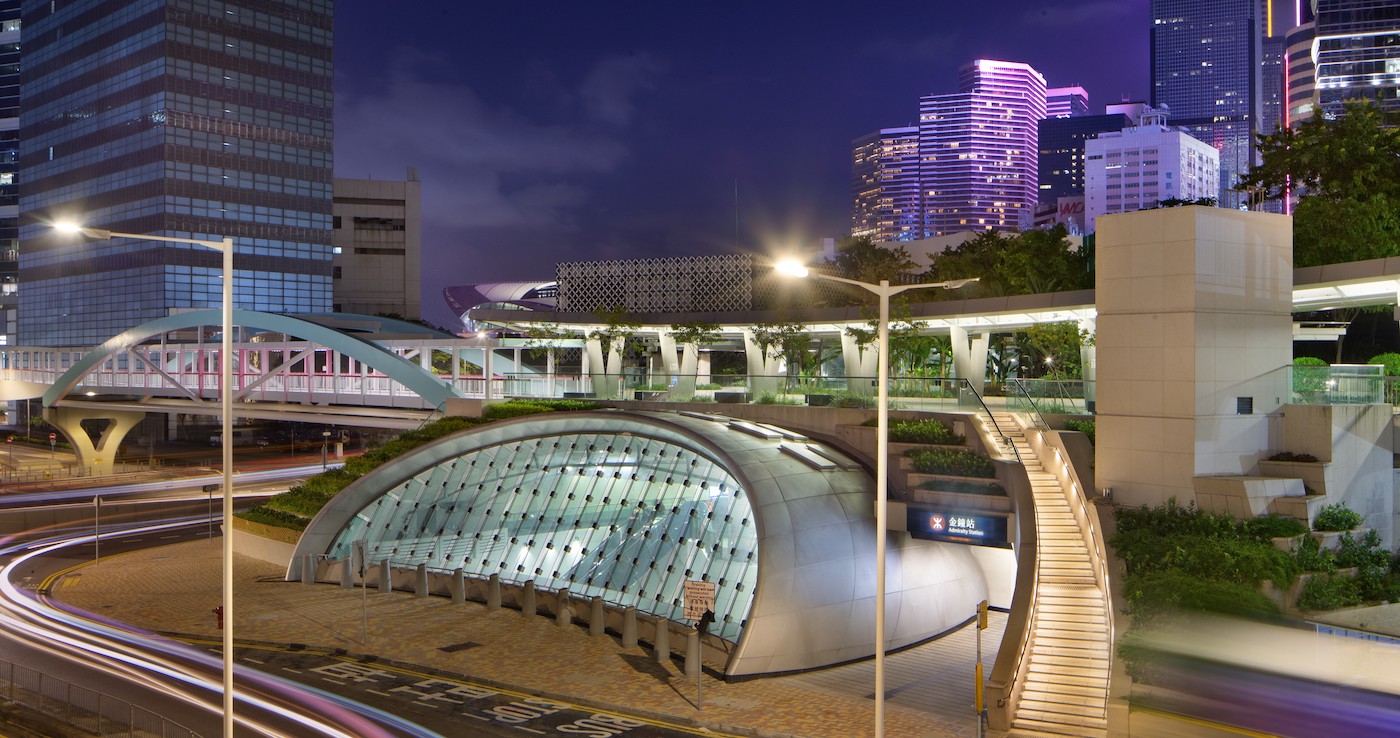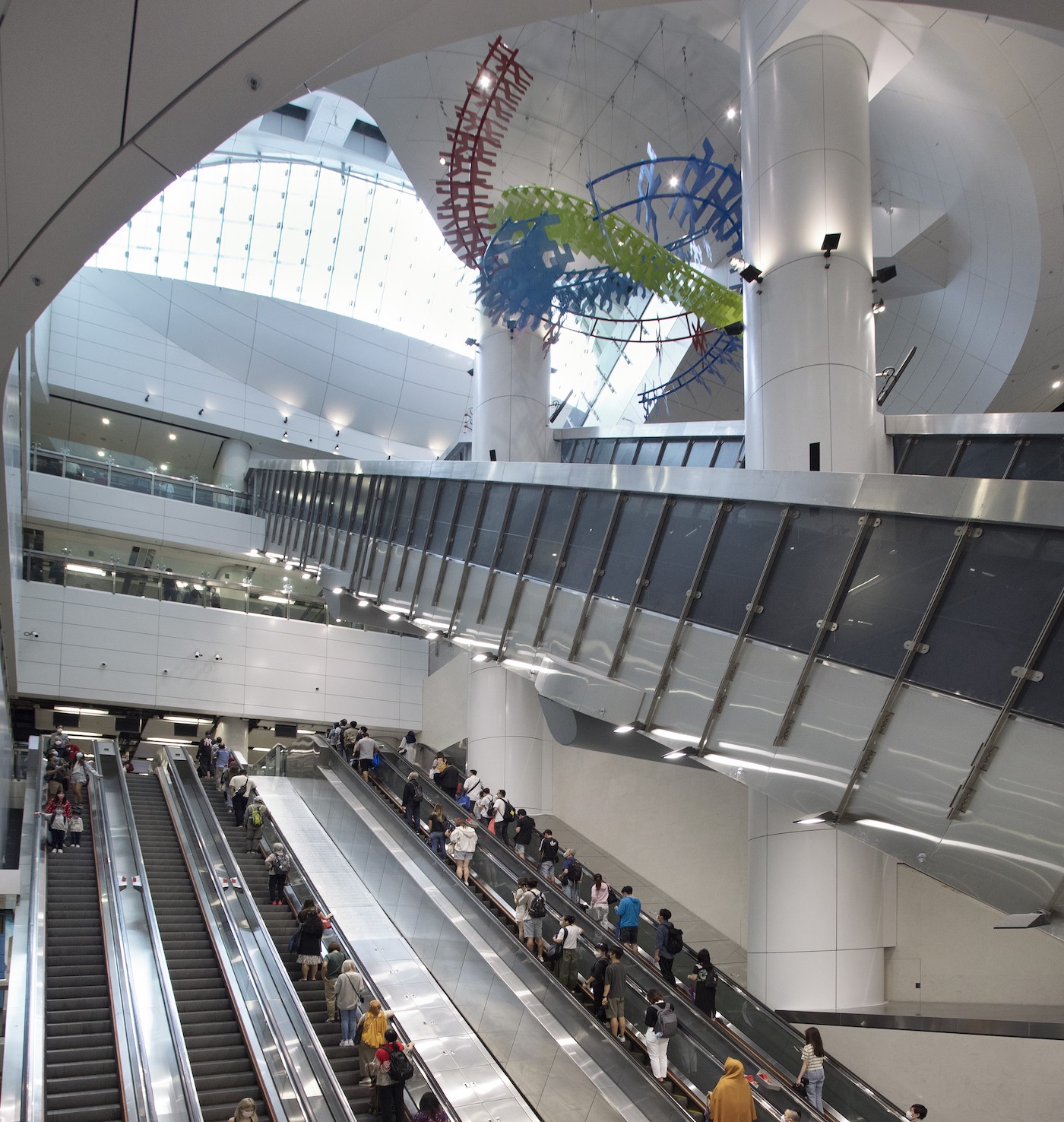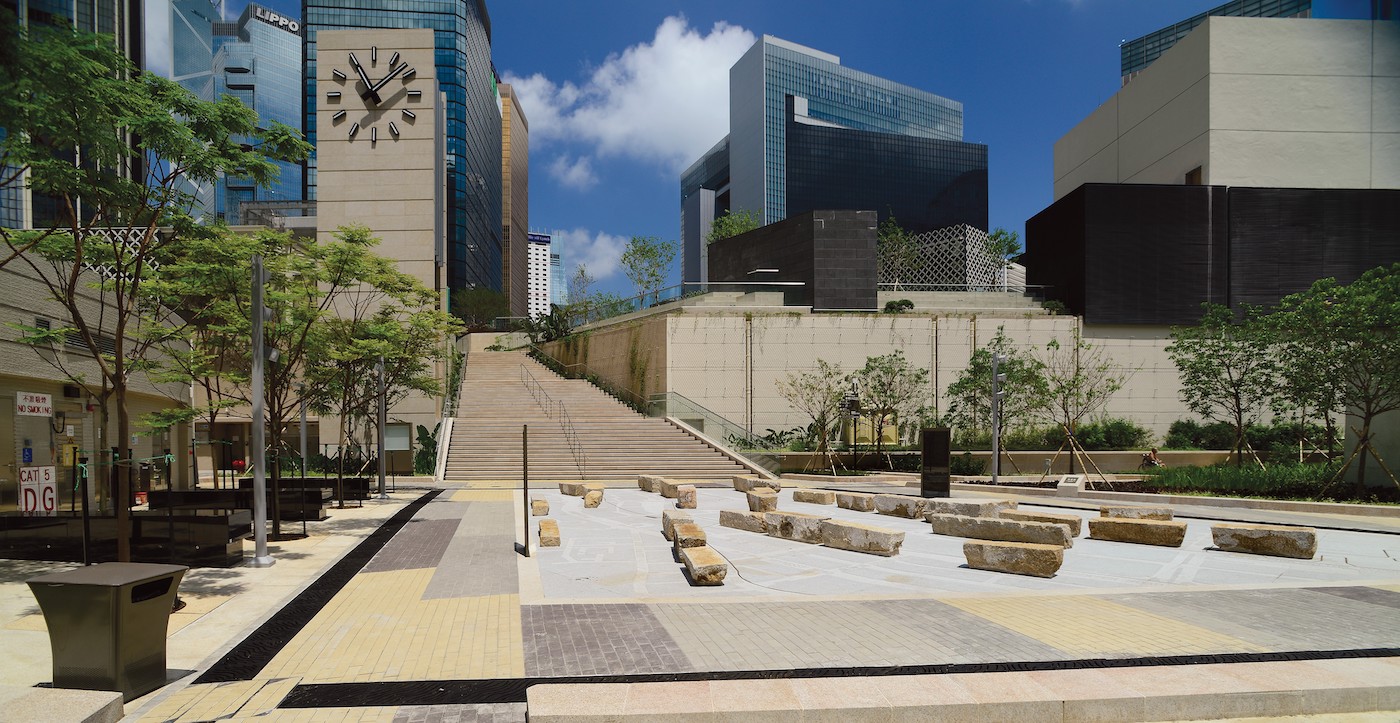
Transforming a busy metro station while city life continues uninterrupted
Imagine being asked to connect two new underground rail lines to one of Hong Kong’s busiest MTR stations without disrupting existing services or the surrounding area. Sounds impossible? Not for global design and engineering company Arup which achieved all this and more at the expanded Admiralty station on Hong Kong island.
Arup’s Director of Architecture, Karma Barfungpa, admits at times it was a “mind-boggling” challenge, especially because it involved so many different disciplines, regulatory and compliance issues, such as ventilation, fire and safety, not to mention the incredible engineering required to excavate huge amounts of earth underneath a mega shopping mall and operating rail lines.
In essence, the team carved out a box 45 metres below the ground, which was 78m long and up to 70m wide, excavating some 22m of solid rock in the process to be used as much-needed refill for land reclamation elsewhere in Hong Kong. The project required meticulously planned and sequenced underpinning of the existing structures with a series of beams and steel columns, while the excavation was underway.

“It’s remarkable to think we were drilling and blasting away so much rock and soil underneath Pacific Place (retail complex) with shoppers walking about, none the wiser,” Karma says. Equally oblivious were the commuters who continued to use the existing Tsuen Wan and Island lines. In fact, the construction team had a limited window of only four hours each night when the trains stopped operating.
The substantial depth of the box and tunnels, when combined with the relatively high groundwater table, created another challenge: a high uplift buoyancy force. To relieve the pressure, Arup created a permanent drainage system under the base slab.
Wayfinding was also a critical task, given that as many as 120,000 people move through the station every peak hour, making it one of the busiest in the MTR network. “It’s the equivalent of the population of a small town, so it was essential that we managed the efficient and safe flow of people between the many platforms and levels,” he says. A real-time interactive model of the station environment helped to optimise wayfinding and signage design.

On completion, the number of platforms doubled from four to eight, spread over eight levels, and the number of escalators went from eight to 42! One of the most spectacular elements of the project is the central atrium, with its glass canopy soaring 30m above the lower concourse level. It floods the area with natural light and the cathedral effect, according to Karma, adds an almost spiritual dimension to the site. It also provides a breath-taking view for pedestrians looking in from ground level.
For Arup, Admiralty station has been a labour of love, dating back almost 50 years. The company was first engaged to work on the site in 1976, when the station connected the island to Kowloon via the Tsuen Wan line. Karma says he looked at old photos from those days which showed the harbourfront adjacent to Harcourt Road, with fishing boats moored nearby.

One of the more fascinating stories to emerge from the project was the discovery of 29 granite rocks during the excavation. The large blocks of stone were originally used for a seawall built back in the early 1900s. “They’re a wonderful reminder of where the harbourfront used to be,” he says. Today they sit in a garden above the station and form part of a stylised stone map of the locality, with outlines of the various reclamations that have taken place in the area since 1842.